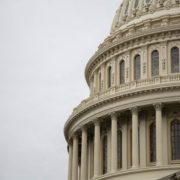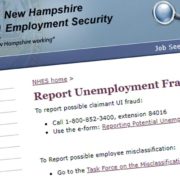Tax Highlights of the American Rescue Plan Act, H.R. 1319
The American Rescue Plan Act, H.R. 1319, a $1.9 trillion COVID-19 relief bill, was passed by Congress on March 10, 2021 and signed by President Biden on March 11, 2021. What are the tax highlights?
Individuals
ECONOMIC IMPACT PAYMENTS/RECOVERY REBATES
- The act provides a $1,400 recovery rebate credit to qualifying individuals, $2,800 for married taxpayers filing jointly plus $1,400 for each dependent, including college students and qualifying relatives who are claimed as dependents. As with the 2020 economic impact payments, the IRS will send out the advance payments of the credit.
- For single taxpayers, the credit and corresponding payment will be reduced at an adjusted gross income (AGI) over $75,000. The credit completely phases out for single taxpayers with AGI over $80,000 and couples with an AGI of $160,000. And for heads of household, the reduction will begin at an AGI of $112,500 and phase out at AGI of $120,000.
- The act uses 2019 AGI to determine eligibility, unless the taxpayer has already filed a 2020 return.
- Consideration should be given to your 2020 AGI vs your 2019 AGI as it relates to the timing of filing your 2020 tax returns to maximize recovery rebates
CHILD TAX CREDIT
- The act increases the child tax credit amount: $3,000 per child, $3,600 for children under 6.
- There is expanded eligibility to include 17-year-olds as qualifying children.
- The credit is fully refundable for 2021.
- Expanded to provide taxpayers 50% of the credit in advance of filing a return.
- The increased credit not available to taxpayers with incomes over $150,000 for married taxpayers filing jointly, $112,500 for heads of household, and $75,000 for others. It reduces the expanded portion of the credit by $50 for each $1,000 of income over those limits.
- The IRS is directed to estimate taxpayers’ child tax credit amounts and pay monthly in advance one-twelfth of the annual estimated amount. Payments will run from July through December 2021.
- The IRS will establish an online portal to allow taxpayers to opt out of advance payments or provide information that would be relevant to modifying the amount.
- The taxpayer, in general, will have to reconcile the advance payment amount with the actual credit amount on the following year’s return and increase taxable income by the excess of the advance payment amount over the actual credit allowed. Taxpayers who’s modified AGI for the tax year does not exceed 200% of the applicable income threshold ($60,000 for married taxpayers filing jointly) will have the increase for an excess advance payment reduced by a safe harbor amount of $2,000 per child.
UNEMPLOYMENT BENEFITS
- The first $10,200 in unemployment benefits are tax-free in 2020 for taxpayers making less than $150,000 per year.
- If you have filed your 2020 tax return the IRS is not recommending that you amend your tax returns at this point.
- Certain unemployment benefits, including the $300/week benefit, extended through September 6, 2021.
COBRA
- COBRA premium assistance is available to individuals who are eligible for COBRA continuation coverage between April 1, 2021 and September 30, 2021.
- Tax credit to taxpayers against Medicare tax.
- It is refundable, and the IRS may make advance payments to taxpayers of the credit amount.
- Applies to premiums and wages paid on or after April 1, 2021 and through September 30, 2021.
- Taxpayers receiving the credit are not eligible for the health coverage tax credit.
- Continuation coverage premium assistance is not includible in the recipient’s gross income.
EARNED INCOME TAX CREDIT
- For 2021, the applicable minimum age is decreased to 19, except for students (24) and qualified former foster youth or homeless youth (18). The maximum age is eliminated.
- The credit’s phaseout percentage is increased to 15.3%, and the phaseout amounts are increased.
- The credit is allowed for certain separated spouses.
- The threshold for disqualifying investment income would be raised from $2,200 to $10,000.
- Temporarily, taxpayers can use their 2019 income instead of 2021 earned income to determine the credit amount.
CHILD AND DEPENDENT CARE CREDIT
- Effective for 2021 only, including making it refundable.
- The credit will be worth 50% of eligible expenses, up to a limit based on income, making the credit worth up to $4,000 for one qualifying individual and up to $8,000 for two or more.
- Credit reduction will start at household AGI levels over $125,000. For households with AGI over $400,000, the credit is reduced below 20%.
- Increases the maximum limit for a dependent care assistance program from $5,000 to $10,500 for 2021 only.
STUDENT LOANS
- Excludes federal student loan debt that is forgiven in 2021 through 2025 from gross income. (However, the bill itself does not actually provide for any student loan forgiveness, which will likely be addressed in future legislation or an executive order.)
PREMIUM TAX CREDIT
- Expands the premium tax credit for 2021 and 2022 by changing the applicable percentage amounts in Sec. 36B(b)(3)(A).
- Taxpayers who received too much in advance premium tax credits in 2020 will not have to repay the excess.
- A special rule is added that treats a taxpayer who has received, or has been approved to receive, unemployment compensation for any week beginning during 2021 as an applicable taxpayer.
Businesses / Self-Employed
FAMILY AND SICK LEAVE CREDITS
- The act extends the credits to September 30, 2021.
- These fully refundable credits against payroll taxes compensate employers and self-employed people for COVID-19-related paid sick leave and family and medical leave.
- The act increases the wage limit to $200 per day, up to a maximum of $12,000 for each individual.
- The number of days a self-employed individual can take into account in calculating the qualified family leave equivalent amount for self-employed individuals increases from 50 to 60.
- The paid leave credits will be allowed for leave that is due to a COVID-19 vaccination.
- The limitation on the overall number of days taken into account for paid sick leave will reset after March 31, 2021.
- The credits are expanded to allow 501(c)(1) governmental organizations to take them.
- The paid leave credits are allowed for leave due to receiving the COVID-19 vaccine or recovery from illness caused by the vaccine.
EMPLOYEE RETENTION CREDIT
- Extended through December 31, 2021. The employee retention credit allows eligible employers to claim a credit for paying qualified wages to employees.
- Beginning after June 30, 2021, the credit will be allowed against the Medicare tax (imposed under IRC 3111(b)).
MISCELLANEOUS TAX PROVISIONS
- The act amends Sec. 162(m), for years after 2026, to add a corporation’s five highest-compensated employees (besides the employees already covered by Sec. 162(m)) to the list of individuals subject to the $1 million cap on deductible compensation.
- The act extends the limitation on excess business losses of noncorporate taxpayers for one year (for any taxable year beginning before January 1, 2027).
- The act provides that targeted Economic Injury Disaster Loan (EIDL) grants received from the U.S. Small Business Administration (SBA) are not included in gross income and that this exclusion from gross income will not result in a denial of a deduction, reduction of tax attributes, or denial of basis increase. Similar treatment is afforded SBA restaurant revitalization grants (see separate news article on our website).
- Temporarily delays the designation of multiemployer pension plans as in endangered, critical, or critical and declining status and makes other changes for multiemployer plans in critical or endangered status.
Source: AICPA – Summary of American Rescue Plan 2021© with permission. LMR is responsible for the content









